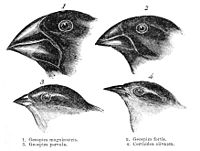
Photo from wikipedia
Accurate species delimitation is essential to properly assess biodiversity, but also for management and conservation purposes. Yet, it is not always trivial to accurately define species boundaries in closely related… Click to show full abstract
Accurate species delimitation is essential to properly assess biodiversity, but also for management and conservation purposes. Yet, it is not always trivial to accurately define species boundaries in closely related species due to incomplete lineage sorting. Additional difficulties may be caused by hybridization, now evidenced as a frequent phenomenon. The brittle star cryptic species complex Ophioderma longicauda encompasses six mitochondrial lineages, including broadcast spawners and internal brooders, yet the actual species boundaries are unknown. Here, we combined three methods to delimit species in the Ophioderma longicauda complex and to infer its divergence history: (i) unsupervised species discovery based on multilocus genotypes; (ii) divergence time estimation using the multi-species coalescent; (iii) divergence scenario testing (including gene flow) using Approximate Bayesian Computation (ABC) methods. 30 sequence markers (transcriptome-based, mitochondrial or non-coding) for 89 O. longicauda and outgroup individuals were used. First, multivariate analyses revealed six genetic clusters, which globally corresponded to the mitochondrial lineages, yet with many exceptions, suggesting ancient hybridization events and challenging traditional mitochondrial barcoding approaches. Second, multi-species coalescent-based analyses confirmed the occurrence of six species and provided divergence time estimates, but the sole use of this method failed to accurately delimit species, highlighting the power of multilocus genotype clustering to delimit recently diverged species. Finally, Approximate Bayesian Computation showed that the most likely scenario involves hybridization between brooders and broadcasters. Our study shows that despite strong incomplete lineage sorting and past hybridization, accurate species delimitation in Ophioderma was possible using a combination of complementary methods. We propose that these methods, especially multilocus genotype clustering, may be useful to resolve other complex speciation histories.
Journal Title: Molecular phylogenetics and evolution
Year Published: 2019
Link to full text (if available)
Share on Social Media: Sign Up to like & get
recommendations!